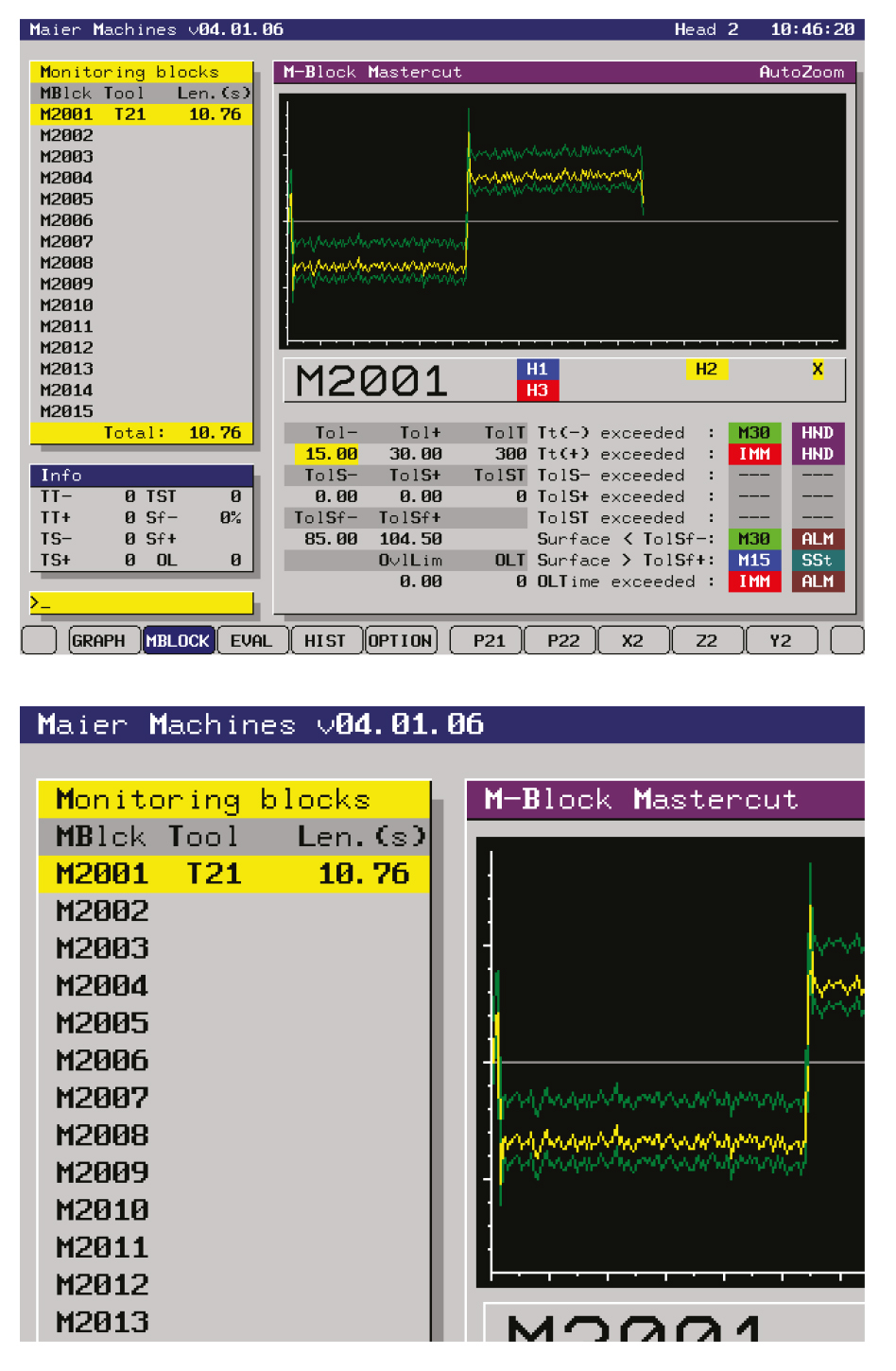
THE FORCE OF MAIER CNC INTEGRATION
WPM is currently the most advanced solution available for the monitoring of CNC tools and processes. It can be integrated seamlessly in the control system of Maier machines - requiring no additional hardware or software. WPM provides simultaneous monitoring of all channels with servo/spindle monitoring, intelligent 'operator instructions', automatic disengagement, multi-part event analysis and non-destructive, resettable tool monitoring alarms.
FLEXIBILITY The WPM provides monitoring for virtually all NC processes - <br/> because they are not restricted to cutting, milling and drilling operations and can instead also be used to monitor tool breakage, component machining with support, complex clamping fixture changes and ejection of parts, thread-rolling and a very great deal more.
PRODUCTIVITY Select what the WPM tool monitoring function should do when it detects a problem – because it is not just restricted to the triggering of an NC alarm. Instead, the machine can also be stopped in the single-step or even in the handwheel program check mode. If the swarf or irregularities in the bearing trigger a false alarm, execution of the NC program can be continued without having to reset the machine cycle and without loss of the areas already machined - a function only available on Maier machines.
COST REDUCTION Maier WPM tool monitoring helps with the drastic reduction of production costs, which are linked to tool breakage, damage to machinery or parts, consumption of raw materials and enhanced safety, especially for unmanned production. Maier WPM tool and process monitoring is available for all FANUC CNC control units.
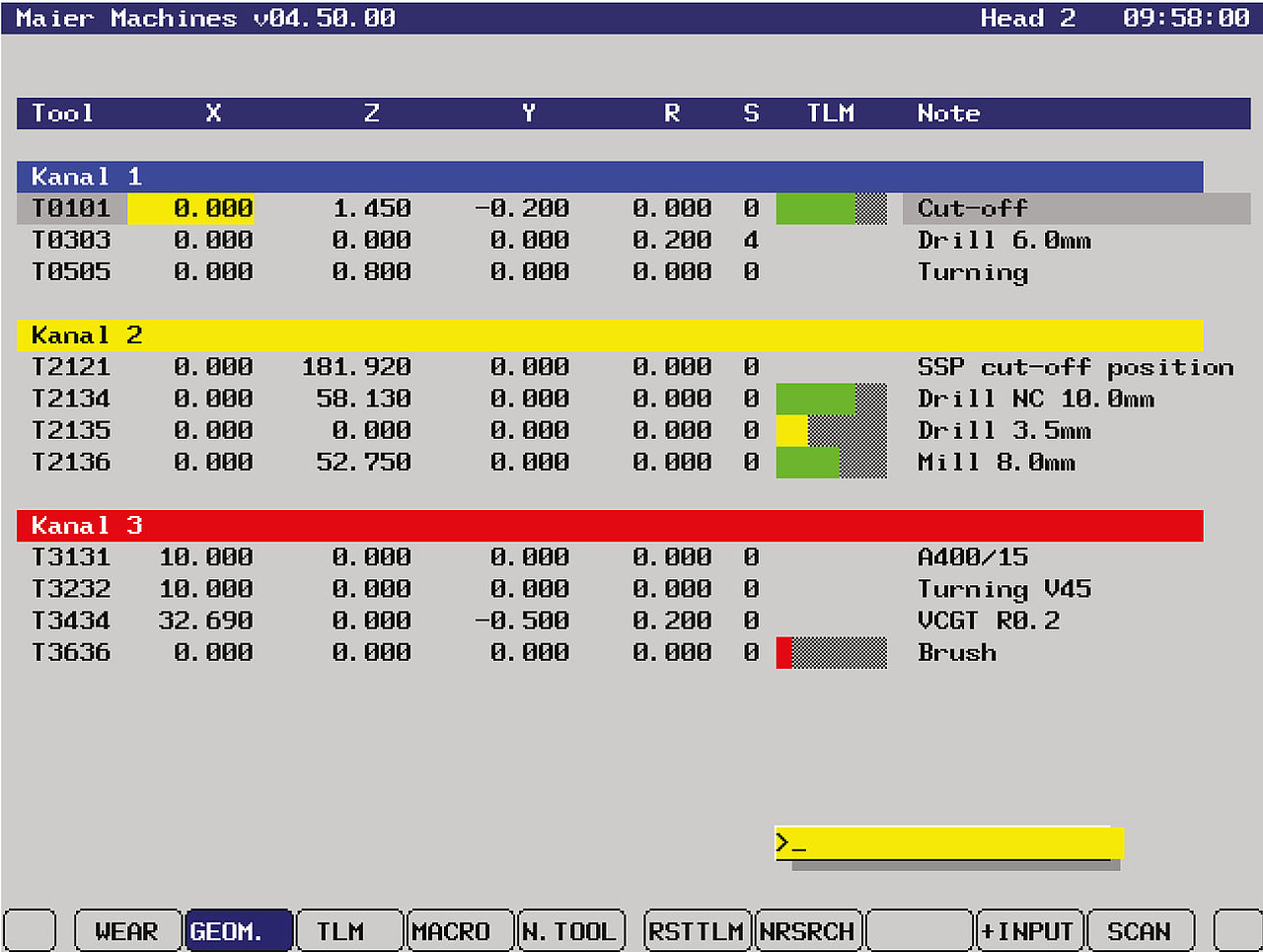
WPM TOOL CATALOG
PRODUCTIVITY The WPM tool catalog is an extension and/or a substitute for the standard FANUC tool correction screen. It provides the full functionality of the original screen and extends it with many functions to boost productivity and to reduce the incidence of operator errors.
EFFICIENCY AND SAFETY Only the tools are displayed that are actually being used for the current part. Every tool has a description that is keyed in manually, or which can also be adopted automatically from the NC program. In addition, 'sister tools' (tools with the same station number but with different geometry) are listed alongside them.
INTEGRATION The WPM tool catalog module integrates itself seamlessly and it operates together with other Maier WPM modules such as PM tool service life monitoring (WPM TLM). If the tool catalog is installed together with the tool service life monitoring function, the Quick View of tool service life and the scope for resetting the service life of a tool and of forcing a tool change within a tool service life group can be used directly from the tool catalog.
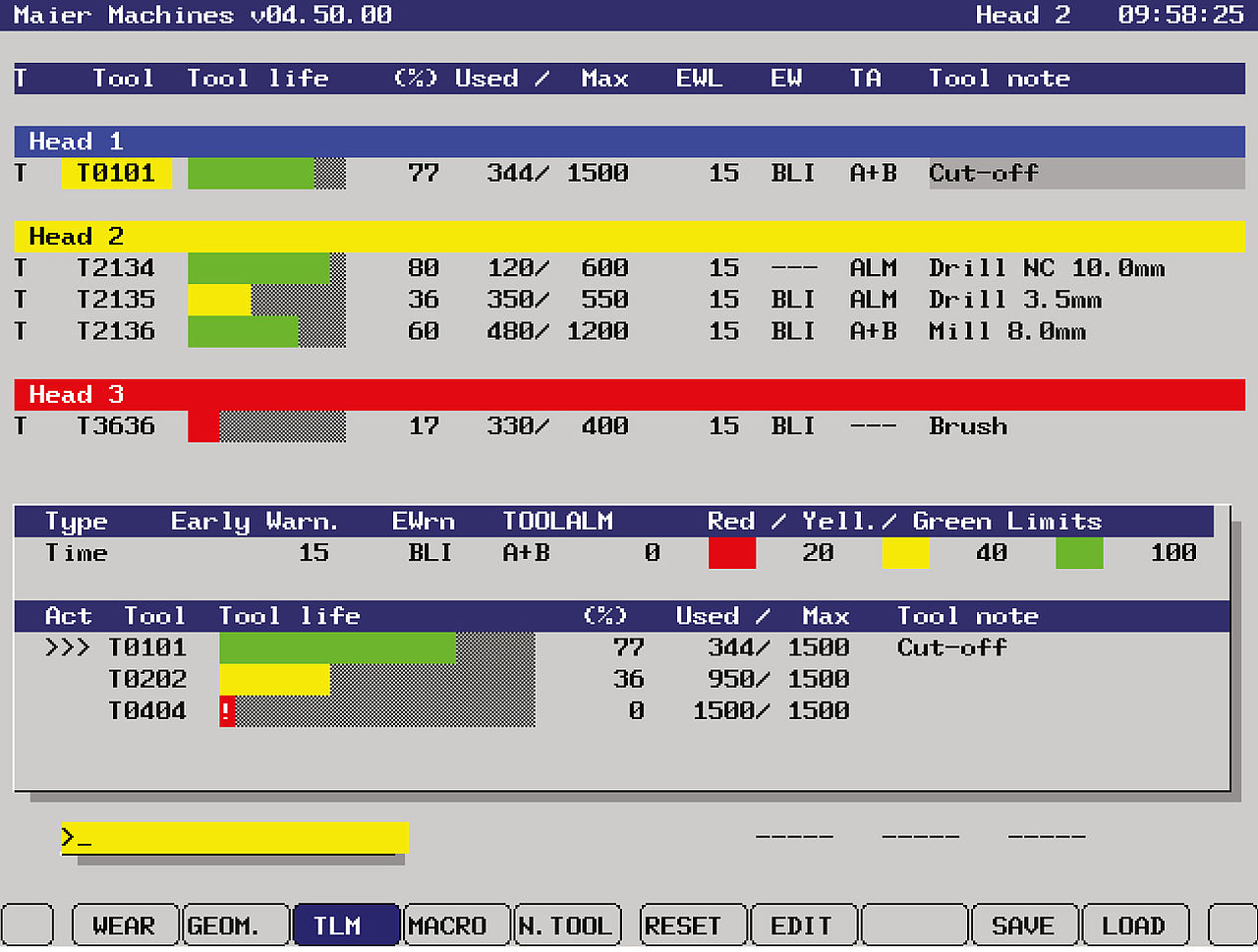
WPM - MANAGEMENT OF TOOL SERVICE LIFE
INTEGRATED IN A LEADING WAY This combination of TLM solution and WPM is the most advance integrated tool service life monitoring system currently available on CNC machines and it facilitates free-of-charge integration in existing NC programs. This means that tool service lives based on operating frequency and the feed rate for cutting operations as well as residual tool service lives can be displayed in graphic format. There is also an early warning system as well as tool service life groups that are also easy to operate.
VISUALIZATION AND PRODUCTION The residual service life of all tools used in an NC program is displayed on a single screen in the form of colored bars, providing a simple display of service life status and tool behavior. In conjunction with the early warning function, this means that tool changes can be planned quickly and in advance without the need to interrupt the production sequence. This reduces the time lost during tool changes and set-ups. When required to do so, the operator can force the jump to the next tool in a service life group to prevent damage to the workpiece.
SEVERAL TOOLS MADE EASY - SERVICE LIFE GROUPS Several identical tools can be grouped easily into tool service life groups. This makes it possible to change tools seamlessly and automatically within a tool group at the end of the service life of one of the tools.
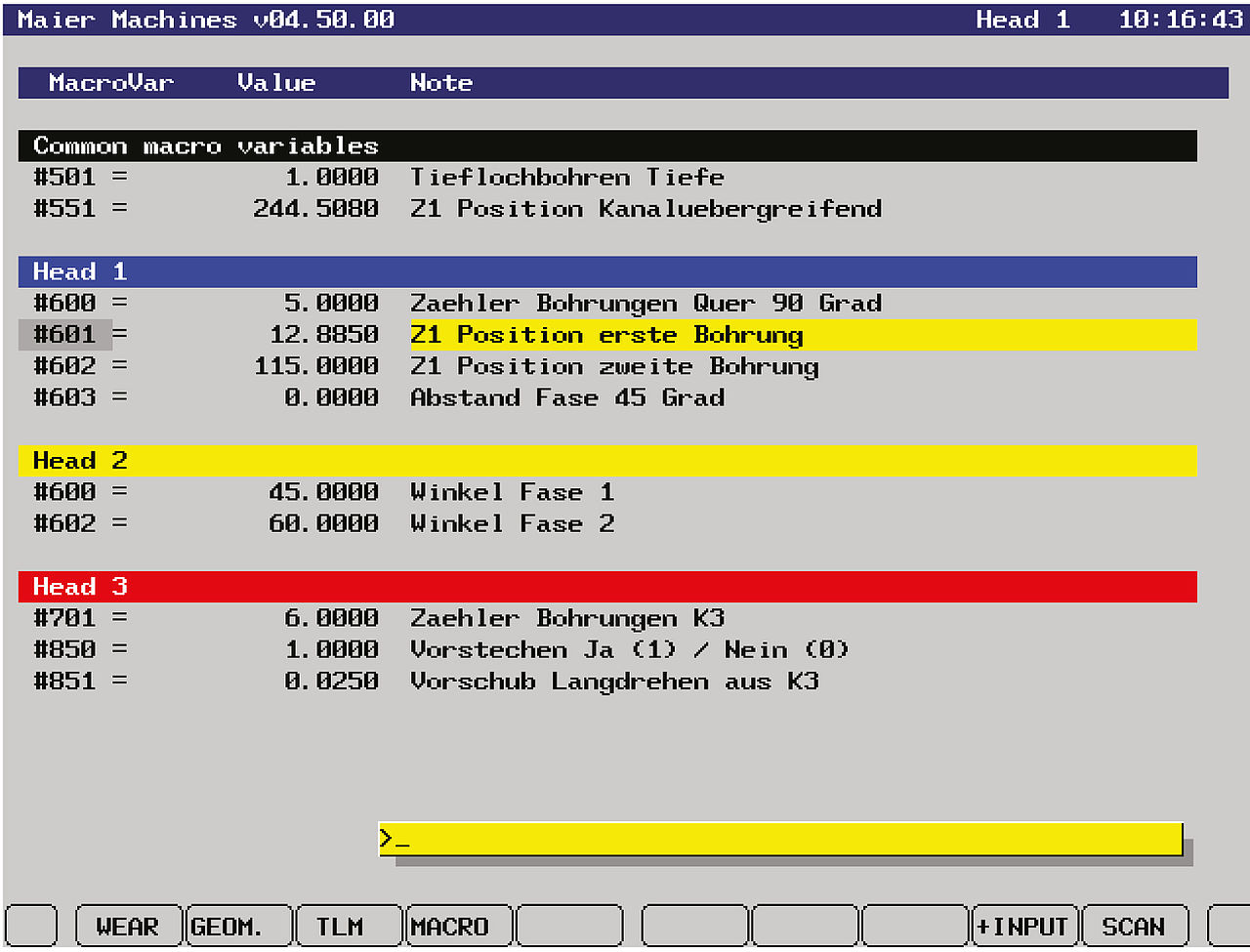
WPM - CATALOG OF MACRO VARIABLES
FLEXIBLE COMPONENT PROGRAMS The WPM catalog of macro variables provides an easy and rapid way to adapt the parameters of NC programs. This module makes it possible to create individual user interfaces for every NC program or for every application. The operator can use this interface to set various NC program parameters such as component or cutaway lengths, diameters, spindle speeds, feed rates, types of part and part features, etc.
PRODUCTIVITY Only the macro variables actually used in the NC program are displayed. They are sub-divided into corresponding sections, depending on whether they apply to all heads or are head-independent. A note is assigned to every variable to inform the operator about the purpose of variables and any possible limit values to take into account. Furthermore, these macro variables can be changed directly through input of a new value or incrementally by adding or subtracting one value from an existing value.
COST REDUCTION Macro variables used in an NC program can be searched for automatically by the module, enabling tooling time and production costs to be reduced. Also the comments located beside the variables in an NC program are identified automatically and are imported as Notes/Description.
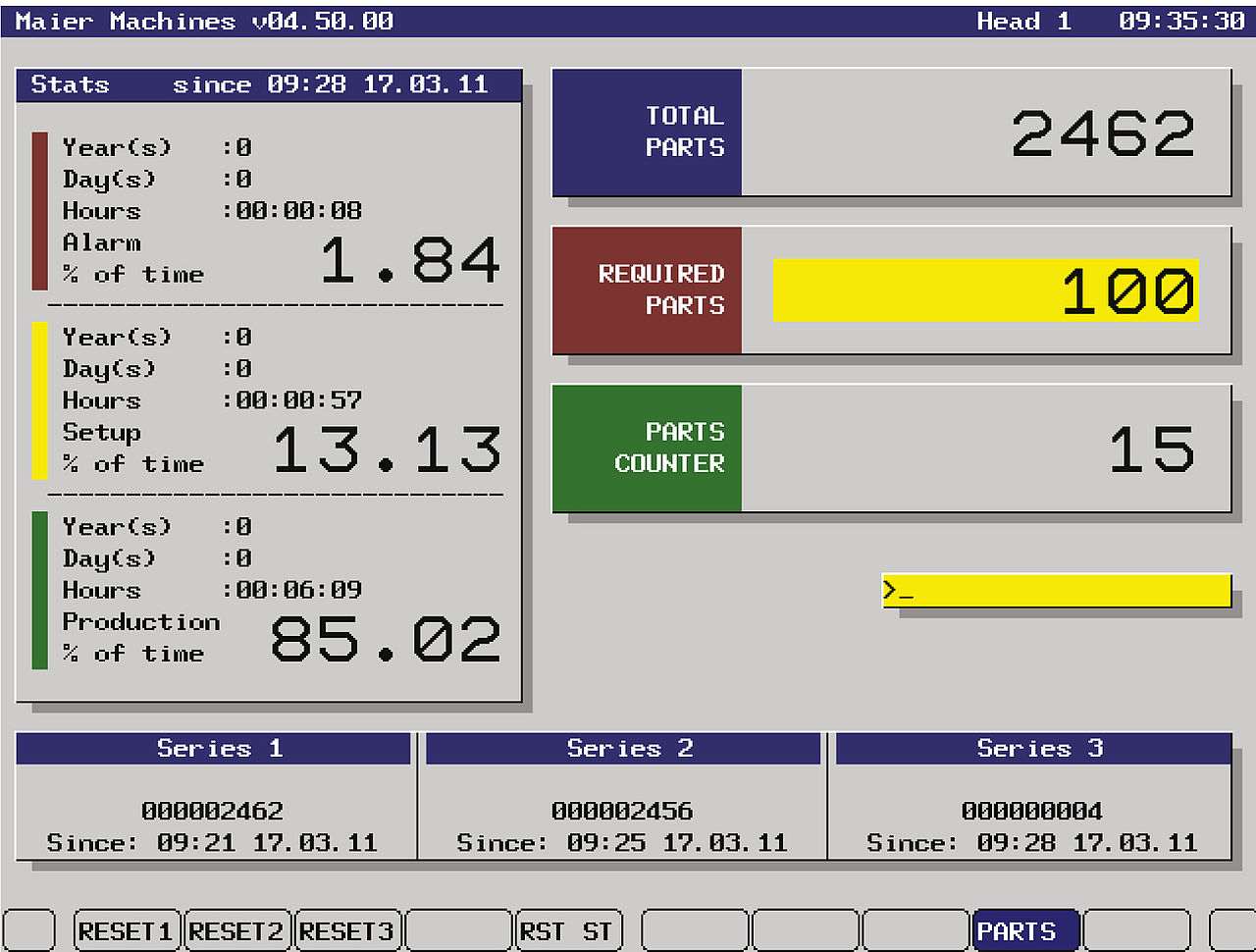
WPM - PART COUNTER AND STATISTICS
PRODUCTION OVERVIEW The WPM part counter and the statistics module provide several functions on a single screen, from the extended part counter to production statistics.
PRODUCTION STATISTICS Production statistics provide a simple but effective overview of the time required for the various tasks in a production cycle, e.g. setting up or actual production.
A CLEAR OVERVIEW The part counter is displayed in large font sizes that can also be read from big distances. The counters can cope with very many parts (up to 9 digits) which in turn makes it easier to set up high-volume production runs in manned and unmanned production modes.